#vanity fair spoilers
Explore tagged Tumblr posts
Note
I love your sprawling Napoleonic war novel phase! Speaking of that, have you ever read Vanity Fair? I read it in November of this year, and it was wonderful. Since it fits into your phase, I thought I would check. 😊 Happy reading either way!!
Yes, I do like Vanity Fair! It was one of my favourites when I was a teenager and it definitely fits the Sprawling Napoleonic War Novel phase. When I reread it a few years ago, I have to confess I didn't like it quite as much. I really need to have at least one character to root for in a novel that long, and almost everyone that book is so awful that spending 900 pages (or however much it was) with them was wearing on me by the end.
That said, Thackeray's chatty narrator is SUCH a great storytelling voice that it's worth reading just for that. And I do like it very much! It's such a good satire. Satire that's still bitingly funny, what, 150 years later? What an achievement. I love the bittersweet ending, I love the fact that there's a bit of hope that young!Rawdon has a much better chance of being happy than most of the adults in the book, and I love the way it's written. Also, it was very satisfying that George died so early on and I didn't have to put up with him for very long. Just - I definitely never want to meet any of these people in a dark alley, or at a dinner party!
#vanity fair#vanity fair spoilers#cannot emphasise enough how delighted i am whenever people appear in my inbox to enthuse about victorian novels <3#asked and answered#roamingbadger
2 notes
·
View notes
Text






severance crack pt. 1/??
#thanks vanity fair i hope u dont mind if i ps ur logo out of all these photos#severance#severance spoilers#mark s#lumon#helly r#dylan g#mister milchick#ms huang#irving b
880 notes
·
View notes
Text
REMEMBER TO STREAM HIND'S HALL BY MACKLEMORE
ALL PROCEEDS GO TO UNRWA.
FREE PALESTINE
EDIT: THERE'S A NEW ONLY AUDIO VERSION ON YOUTUBE WHICH ISN'T AGE RESTRICTED. KEEP STREAMING
#free palestine#free gaza#from the river to the sea palestine will be free#from the river to the sea#palestine#macklemore#met gala#the amazing digital circus#tadc#tadc spoilers#eurovision#vanity fair#all eyes on rafah#dimension 20#dragon#aew
308 notes
·
View notes
Text
TOM GLYNN-CARNEY INTERVIEWED BY VANITY FAIR MAGAZINE.
KING AEGON COULD BE A VERY ONE-NOTE VILLAIN CHARACTER, BUT IN YOUR HANDS IS NOT. HOW DID YOU APPROACH CALIBRATING AEGON?
"I think anybody who has the darker side to them as the more prominent side — the side that people see first —there’s always a reason for that."
"I dug into that and found a lot of his boyish vulnerability, insecurities, and self-hatred — stuff that he’d been drip-fed his entire life."
"He wasn’t even a spare, you know? He was just completely ignored."
"He was invisible to most people, which is why he behaved in such a way — to numb himself."
But also to say: "Hey, I’m here as well."
"Any attention was good attention for Aegon."
"I find him less of a villain and more of a tragic case."
CAN YOU TALK A LITTLE BIT ABOUT WHY AEGON DECIDED TO FLY TO ROOK'S REST AT ALL?
"It was that moment — well, it’s an accumulation of moments — but that one in particular where Alicent says, 'Do exactly what is required of you: nothing'."
"That was the final dagger in the heart."
"A real cold reminder that he really is seen as being useless."
"A pawn for Alicent and Otto [Rhys Ifans] to use as a puppet."
"But at the end of the day, the law of the land states that he’s the monarch."
"He’s the king."
"He’s the person to call the shots."
"And no one’s gonna fucking stop him from getting on that dragon if he wants to."
"So he got absolutely obliterated drunk and thought, I’m gonna show them."
WHAT WAS YOUR EXPERIENCE LIKE SHOOTING THE BIG DRAGON FIGHT SCENE?
"Cool, man."
"It’s kind of a little boy’s dream."
"It’s just something that you think of when you’re a child as being the coolest thing in the world."
"And it really was."
"They basically build a screen around you so you know where to look: what’s expected, what’s coming at you, what’s leaving you."
"Your entire perspective is quite clear."
"And then amongst that, you’re clad in all this armor that has been expertly crafted by some amazing workmanship."
"But then again, you’re crouched over this big saddle, strapped in, feeling like you can’t move."
"That crane has really got a lot of work to do to make it look like you’re moving."
AT THE BEGINNING OF THE SEASON, AEGON SAYS THAT AEMOND IS HIS CLOSEST CONFIDANT, AND BY EPISODE FOUR, AEMOND HAS BASICALLY TRIED TO KILL HIM. WHERE DO THEY STAND NOW? AND WHAT'S YOUR RELATIONSHIP WITH EWAN MITCHELL, WHO PLAYS AEMOND?
"Oh, Aegon and Aemond’s relationship is very different to Tom and Ewan’s relationship."
"Let’s put that out there." [laughs]
"Look, that is sibling rivalry on a very intense scale, isn’t it? It’s the flip of the switch that can happen when somebody feels pushed out or somebody feels like there’s been injustice."
"I always felt like Aemond saw himself being in that position of power and dealing with it better than Aegon would deal with it."
"But then again, his birth certificate states otherwise."
"It was bound to happen at some point, wasn’t it?"
WAS THERE A PARTICULAR SCENE THAT YOU FELT EXTRA CHALLENGED BY OR INVIGORATED BY?
"He’s never in the same frame of mind twice in one day."
"He’s all over the place."
"Keeping up with his erratic mood swings was the hard part, and was this thing that I was having to stay really focused on."
"There wasn’t particularly one scene that I thought, Oh God, not this one, because all of them are challenging in different ways."
"Even the ones where he’s still and more focused are difficult, because you’ve got that sort of inner Aegon rhythm that is rapid."
"It’s very different to mine."
"It’s maintaining that, but still keeping the tension of the scene."
"I relished the opportunity to play someone with such range and creative potential from an acting point of view."
OLIVIA COOKE, WHO PLAYS ALICENT, HAS NOTED THAT YOU TWO ARE NOT VERY FAR APART IN AGE AT ALL, AND YET ARE PLAYING MOTHER AND SON. HOW DID YOU GUYS WORK TOGETHER TO CREATE THAT FILIAL DYNAMIC?
"Every scene that I’ve had with Olivia, there is never a moment that isn’t filled."
"Everything is just so complex and deeply entrenched in her."
"She means everything she says."
"It’s a rare skill to have."
"As an actor, she has that in truckloads."
"It’s a gift to be able to work with her, to play her son."
"Yeah, [it’s] hilarious."
"She’s only a year older than me."
"I think we manage it because we get on so well."
"We’re pals as well, you know."
"I love Olivia to bits."
"Trust her wholeheartedly."
"We have a laugh. We don’t take it too seriously."
"We have common ground on that."
"But then in the moments where the work is happening, it’s all we care about."
"We care immensely."
"It’s one of those things where in the downtime, after we wrap, we can go for a drink."
"We can have a laugh."
"We connect on a personal level as well as a professional level."
"I think that’s what sort of breeds a healthy and believable performance thing relationship-wise."
THERE'S AN AMUSING SCENE WHERE AEGON IS SITTING AROUND WITH THE LADS AND TALKING ABOUT WHAT HIS SOBRIQUET SHOULD BE. SHOULD HE BE 'AEGON THE BRAVE,' 'AEGON THE WHATEVER,' ETC. WHAT DO YOU THINK HE SHOULD BE CALLED?
"Aegon Toast, probably."
#house of the dragon#hotd#hotd s2#tv shows#team green#aegon ii targaryen#king aegon ii targaryen#tom glynn carney#hotd aegon#the greens#magazine#interview#hotd s2 spoilers#hotd spoilers#aemond targaryen#ewan mitchell#aegond#glytchell#aegon x aemond#prince regent aemond#olivia cooke#queen alicent hightower#alicent hightower#hotd alicent#aegon x alicent#vanity fair#hotd cast#green siblings
151 notes
·
View notes
Text
fifteen saying “I’m going to keep this face for a while. Why would I want to change it”
*intense flashbacks to the last time a doctor said that and it ended horribly for everyone

#Okay to be fair 10’s vanity issues were 100% worse#But it never ends well when the doctor gets attached to their face#doctor who#dw spoilers#15th doctor#10th doctor
98 notes
·
View notes
Text

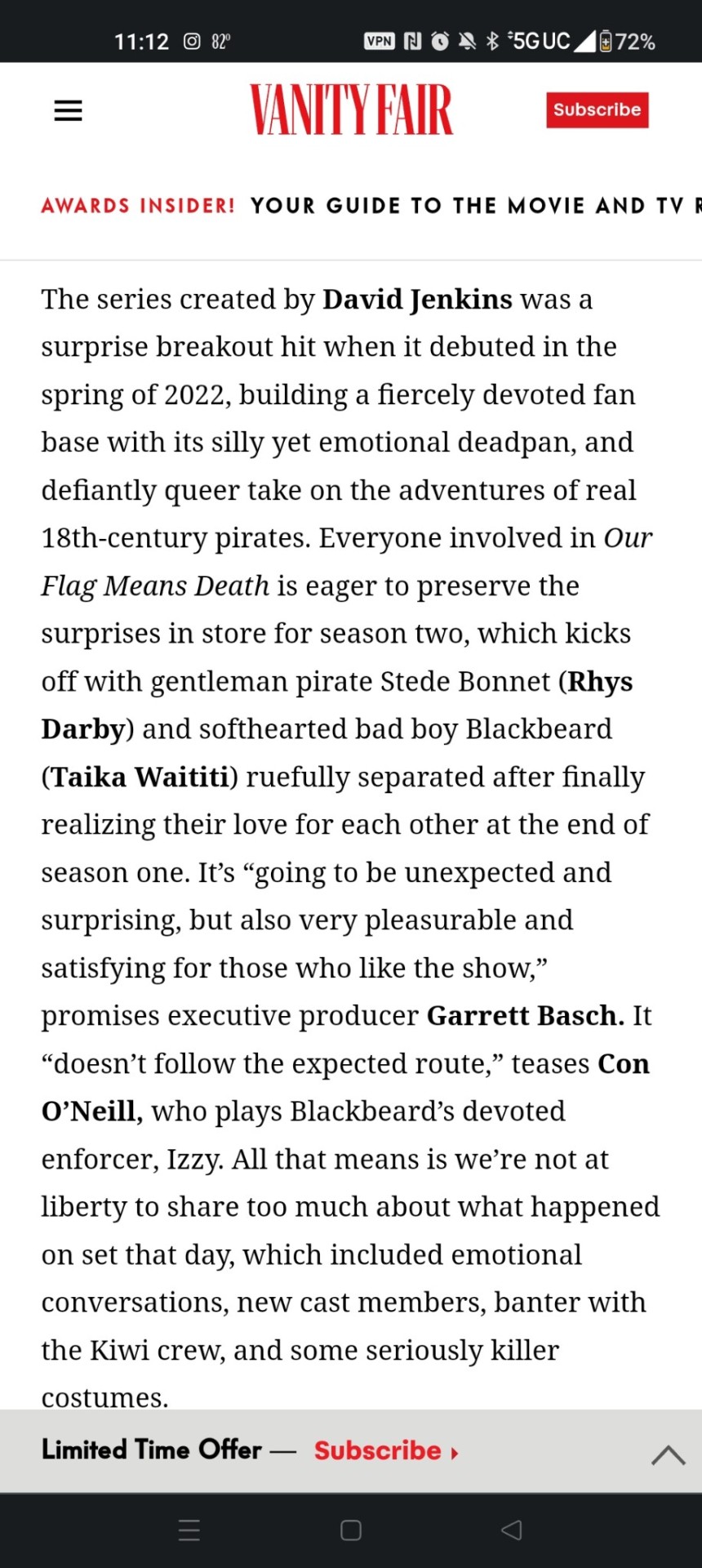

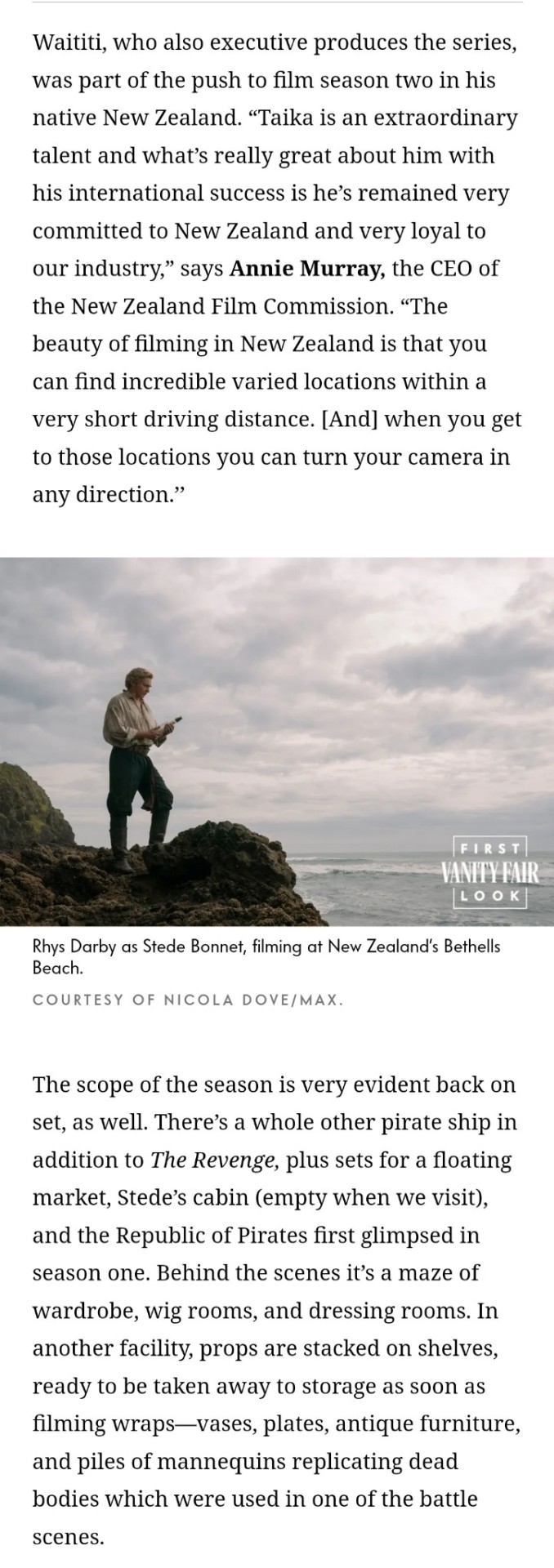
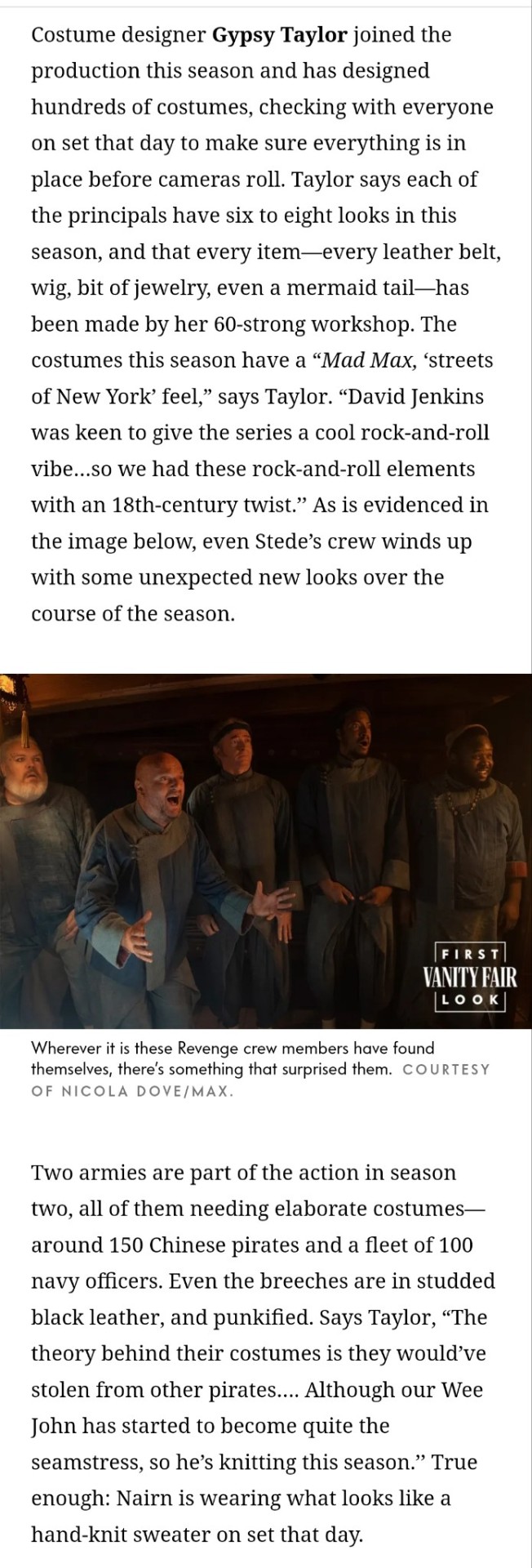




#vanity fair#our flag means death#ofmd#season 2#spoilers kinda#ofmd season 2#i just needed to be able to read this article at all times
216 notes
·
View notes
Text
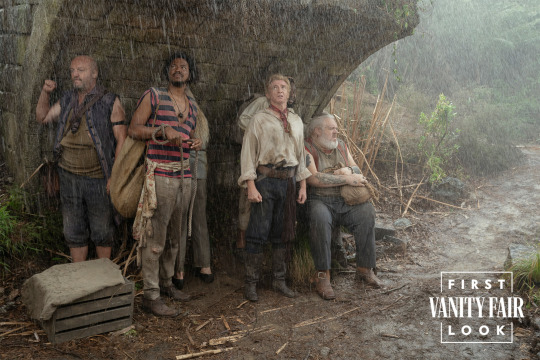
Our Flag Means Death Season 2: Exclusive First Look
Vanity Fair joins Stede, Blackbeard, and the rest of the cast on set in New Zealand for an exclusive early look at the second season, debuting on Max in October.
BY SARAH CATHERALL (AUGUST 24, 2023)
Only the fans of Our Flag Means Death can determine whether they’ll be satisfied with the show’s second season, which debuts on Max in October. But if you ask Fernando Frias, who directed three of the season’s episodes, he sounds pretty confident: “If my life depended on saying whether it’s yes or no, I would say yes.’’
It’s December 8, 2022, and the principal actors on Our Flag Means Death as well as the 800-plus extras and crew members have three days left of their three-month shoot for season two. Things are starting to get emotional. “You’ve been the most amazing crew I’ve ever worked with,” says one actor as he wraps his final scene. Frias says it’s like leaving “a long summer camp,” adding, “it’s like a family.”

Rhys Darby as Stede Bonnet. COURTESY OF NICOLA DOVE/MAX.
The series created by David Jenkins was a surprise breakout hit when it debuted in the spring of 2022, building a fiercely devoted fan base with its silly yet emotional deadpan, and defiantly queer take on the adventures of real 18th-century pirates. Everyone involved in Our Flag Means Death is eager to preserve the surprises in store for season two, which kicks off with gentleman pirate Stede Bonnet (Rhys Darby) and softhearted bad boy Blackbeard (Taika Waititi) ruefully separated after finally realizing their love for each other at the end of season one.
It’s “going to be unexpected and surprising, but also very pleasurable and satisfying for those who like the show,” promises executive producer Garrett Basch. It “doesn’t follow the expected route,” teases Con O’Neill, who plays Blackbeard’s devoted enforcer, Izzy. All that means is we’re not at liberty to share too much about what happened on set that day, which included emotional conversations, new cast members, banter with the Kiwi crew, and some seriously killer costumes.
But these exclusive new images give a hint of what is in store. There are fresh faces—Minnie Driver will guest-star as the real-life Irish pirate Anne Bonny, and Ruibo Qian joins the cast as the mysterious merchant Susan—and a lot of New Zealand actors and locations, now that the production has decamped across the Pacific.
“The viewers will see the scope of their world has expanded based on the fact we’re able to get to these amazing locations within a short travel time,” says executive producer Antoine Douaihy. “You will notice a marked difference between the two seasons in terms of the scope and the scale.’’
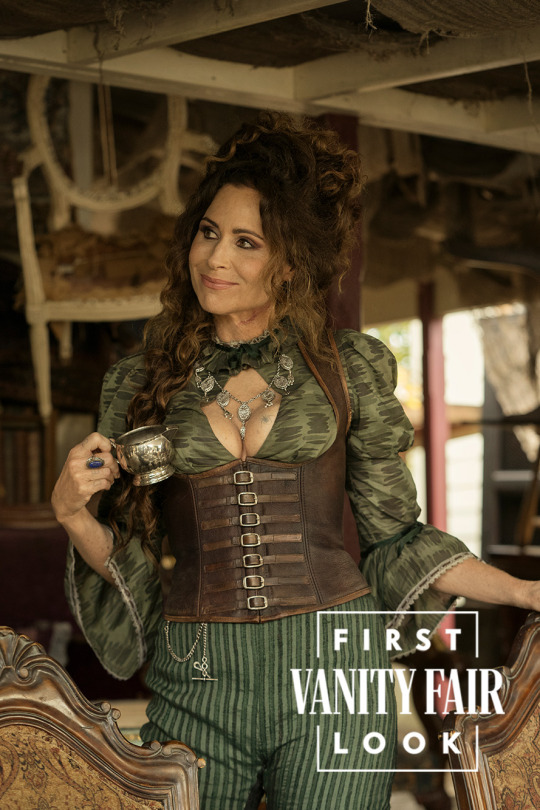
Minnie Driver joins the cast this season as Anne Bonny. COURTESY OF NICOLA DOVE/MAX.
There will be plenty of familiar faces too, of course. On set that day in Kumeu, New Zealand, a rural area about 20 miles outside of Auckland, are Waititi and Darby along their fellow returning cast members O’Neill, Vico Ortiz (Jim), Kristian Nairn (Wee John), Joel Fry (Frenchie), Matthew Maher (Black Pete), Leslie Jones (Spanish Jackie), Samson Kayo (Oluwande), Ewen Bremner (Nathaniel Buttons), Samba Schutte (Roach), and more. New onboard are two Kiwi actors, Madeleine Sami (most recently of the Australian mystery-comedy Deadloch), and Samoan-born Anapela Polataivao. And there’s one returning figure impossible to miss on the soundstage: The Revenge, the stately ship that Blackbeard—a.k.a. Ed—commandeered at the end of season one. In real life it was carefully transported across the Pacific Ocean from the show’s original Los Angeles soundstages.
The Revenge is vast and impressive, much larger in real life than it appears onscreen. But it’s not the only stunning scenery in store. There are around 50 sets involved in the production of season two, including the 30-acre forest behind the Kumeu Film Studio, Piha Beach, and the wild, black-sand Bethells Beach.
Waititi, who also executive produces the series, was part of the push to film season two in his native New Zealand. “Taika is an extraordinary talent and what’s really great about him with his international success is he’s remained very committed to New Zealand and very loyal to our industry,” says Annie Murray, the CEO of the New Zealand Film Commission. “The beauty of filming in New Zealand is that you can find incredible varied locations within a very short driving distance. [And] when you get to those locations you can turn your camera in any direction.’’
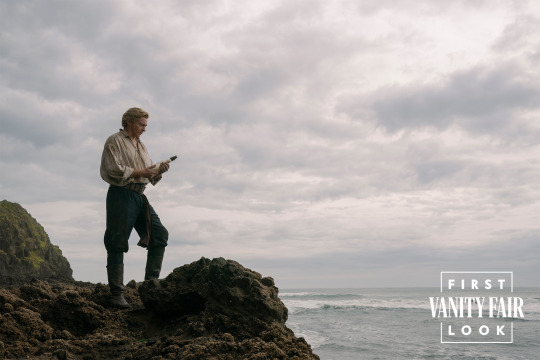
Rhys Darby as Stede Bonnet, filming at New Zealand’s Bethells Beach. COURTESY OF NICOLA DOVE/MAX.
The scope of the season is very evident back on set, as well. There’s a whole other pirate ship in addition to The Revenge, plus sets for a floating market, Stede’s cabin (empty when we visit), and the Republic of Pirates first glimpsed in season one. Behind the scenes it’s a maze of wardrobe, wig rooms, and dressing rooms. In another facility, props are stacked on shelves, ready to be taken away to storage as soon as filming wraps—vases, plates, antique furniture, and piles of mannequins replicating dead bodies which were used in one of the battle scenes.
Costume designer Gypsy Taylor joined the production this season and has designed hundreds of costumes, checking with everyone on set that day to make sure everything is in place before cameras roll. Taylor says each of the principals have six to eight looks in this season, and that every item—every leather belt, wig, bit of jewelry, even a mermaid tail—has been made by her 60-strong workshop. The costumes this season have a “Mad Max, ‘streets of New York’ feel,” says Taylor. “David Jenkins was keen to give the series a cool rock-and-roll vibe…so we had these rock-and-roll elements with an 18th-century twist.’’ As is evidenced in the image below, even Stede’s crew winds up with some unexpected new looks over the course of the season.

Wherever it is these Revenge crew members have found themselves, there’s something that surprised them. COURTESY OF NICOLA DOVE/MAX.
Two armies are part of the action in season two, all of them needing elaborate costumes—around 150 Chinese pirates and a fleet of 100 navy officers. Even the breeches are in studded black leather, and punkified. Says Taylor, “The theory behind their costumes is they would’ve stolen from other pirates…. Although our Wee John has started to become quite the seamstress, so he’s knitting this season.’’ True enough: Nairn is wearing what looks like a hand-knit sweater on set that day.
Wee John isn’t the only pirate getting into crafts. Nancy Hennah, who has managed the hair and makeup for both seasons, points to Blackbeard’s wig—made in London—and tattoos as Waititi works on set. With 14 tattoos on his right arm and 10 on the left, plus plenty of scars, he needs at least an hour in the makeup chair. “Taika wanted most of the tattoos to look like he’d done them himself,” Hennah says. “Like on slow days on the boat when there’s nothing much to do, they sit around and give each other tattoos.”
She gives a hint of a storm in one episode: “One of the hardest days here in makeup was when they were caught in a storm on the back of the boat. [The cast] were saturated for a whole day, which caused havoc with things like tattoos and hair, wigs and beards.’’
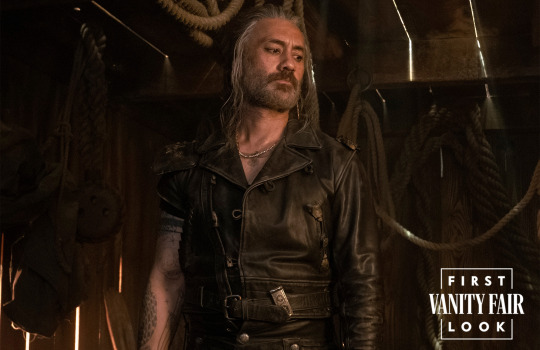
Taika Waititi as Blackbeard, who begins the season with a broken heart. COURTESY OF NICOLA DOVE/MAX.
By mid afternoon, Con O’Neill is taking a break in his trailer. He pulls his slim, leather trousered legs up to a corner seat. A candle blazes on the kitchen bench as the veteran actor talks about the physical endurance required during the shoot. “It’s been frantic,’’ he says. His signature gray hair barely moves, frozen by the team of hair stylists who arrived on set around sunrise. (All interviews with actors in this story took place before the SAG-AFTRA strike).
Izzy “goes on a remarkable journey” this season, says O’Neill. “He understands what love is and whom he’s in love with.’’ On a series featuring a variety of joyful queer relationships—not just Stede and Blackbeard, but Black Pete and Lucius (Nathan Foad), Jim and Oluwande, and Spanish Jackie and her many husbands—Izzy’s unyieldingly straitlaced devotion makes him an odd man out. By the end of season one many fans speculated that Izzy was driven by something at the intersection of love and obsession. This season, according to O’Neill, Izzy gets even deeper into that dynamic. “Physically it’s been quite demanding, and also emotionally it’s been quite demanding to be playing a man enraged by unrequited love, who’s basically a hopeless romantic, and to be able to play all that and also remember that this is fundamentally a comedy.’’
Though the show is often warm and fuzzy when it comes to feelings—one of Stede’s mottos in season one is that when faced with challenges, “we talk it through as a crew”—Izzy represents the darker, more violent side of pirate life, which the show doesn’t shy away from either. “What I love about this show is it does allow itself to swing between the two,” O’Neill says. “We’re almost operatic in our darkness at times, and then we swing back to the sweetness of the simplicity of the love of our two guys. It’s been challenging just to get the tone right.”
“We’ve gone further this season than we did last season with those tones,” he continues. “So sometimes it’s quite interesting to remind yourself that you have to take your foot out of the tragedy—literally, your foot—and put it back into the comedy.”
With a season behind them to build the dynamics between the characters and the actors alike, on set there’s been “a lot more spontaneity and script revisions based on what’s happening day-to-day,” says Douaihy. “The cast are so comfortable with one another and their characters, that they move through it naturally.’’
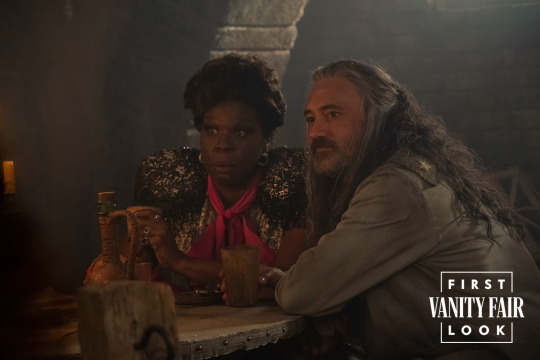
Leslie Jones as Spanish Jackie and Taika Waititi as Ed a.k.a. Blackbeard. COURTESY OF NICOLA DOVE/MAX.
The way O’Neill puts it, they’ve also built trust with Jenkins, their showrunner, to follow some bigger swings. “I don’t think David Jenkins is ever going to follow an expected route. I’d hate to drive in a car with him.” Thinking of the fans who will greet the series when the show returns in October, O’Neill continues, “I think they’re going to appreciate what [Jenkins] wants. Season two does stick to the original premise that we created in season one, which is take it on to other levels.’’
One character leveling up in a major way this season is Jim, the quiet badass (there are knives involved) played by the nonbinary actor and activist Vico Ortiz. “Jim really evolves in season two,” they say. “They’re a bit more chatty and a bit more conversational…. Most of the first season you see Jim in disguise, hiding, but in this one you see them a bit more [thinking,] Oh, this is my chosen family, and I feel good. There’s a bit more zaniness and a bit more softness.’’
Like O’Neill and several other castmates, Oritz had attended their share of fan events by the time season two began filming, and the entire cast and crew returned to the high seas with a strong sense that their show had taken on a life of its own. “It’s so beautiful to see that people are finding community within the fan base. It’s about creating spaces where we feel safe and seen, and it’s so great to see that so many people watch the show and feel validated in their experiences, whatever that may be,” says Ortiz. “A lot of people that watch the show are like, “Yeah, I’m a guy and it’s good to see all these dudes being vulnerable.’ We can just shake up [ideas about gender].’’
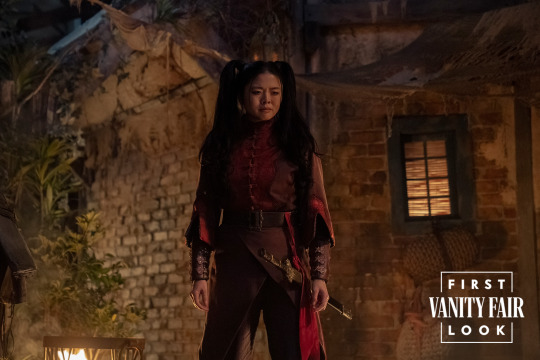
Ruibo Qian joins the cast this season as Susan, a merchant with secrets of her own. COURTESY OF NICOLA DOVE/MAX.
Basch admits the fan following surprised some of the team, “but it made a lot of sense” too. After years of television shows and movies that built up the potential of queer romance only to stop short, Basch thinks the fervor for Our Flag Means Death “says that shows in the mainstream aren’t delivering that promise or that setup, and we have. That’s really why the fans have gone wild for it.”
That promise, it’s safe to say, is kept in season two, and then some. On set that day in December, for example, there was a major romantic moment between two key characters. But we’d risk Ed Teach’s wrath if we told you any more.
Source: Vanity Fair
#rhys darby#taika waititi#minnie driver#samba schutte#kristian nairn#matthew maher#ofmd#our flag means death#vanity fair#ofmd season 2#ofmd s2 spoiler alert
188 notes
·
View notes
Text

New pic of Adam Driver in Megalopolis & film info
37 notes
·
View notes
Text

OFMD SEASON 2 THEORY: “Susan”
This is the mysterious merchant, Susan, mentioned in the Vanity Fair article. I have reason to believe that this woman’s identity is that of the most successful pirate captain in all of history, Zheng Yi Sao.
Not only does the rather fabulously dressed actor, Rubio Qian, have Chinese ancestry (like Zheng Yi Sao) but she was introduced in the article alongside Minnie Driver who plays the (admittedly less successful yet) more infamous Anne Bonny. This gives me reason to believe that this “Susan” is based on a real life historical figure; and who could be more fascinating a figure to portray than the wonderful and terrible Zheng Yi Sao.
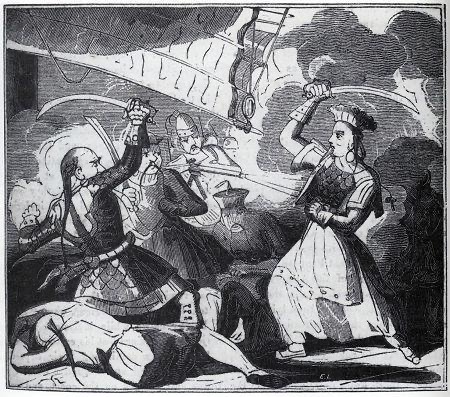
#ofmd season 2#ofmd s2 spoilers#ofmd s2#our flag means death#ofmd theory#ofmd#ofmd vanity fair#ofmd women#Rubio Qian#zheng yi sao#pirates
107 notes
·
View notes
Text

oH my daddycakes

#house of the dragon#daemon targaryen#matt smith#hotd#rhaenyra targaryen#hotd spoilers#caraxes#prince daemon targaryen#syrax#daemyra#matt smith edit#oscar2023#vanity fair#matt smith icons
170 notes
·
View notes
Text


look at me going absolutely feral over these two…again
#not spoilers#from a vanity fair article#rwrb#rwrb on prime#rwrb movie#red white & royal blue#red white and royal movie#red white and royal blue#alex claremont diaz#henry fox mountchristen windsor#firstprince#taylor zakhar perez#nicholas galitzine
64 notes
·
View notes
Text
Spoilers follow for the season finale of Our Flag Means Death.
After starting the season with its lovable cast split in two, Our Flag Means Death concluded its second season with the entire crew of the Revenge sailing off together into the literal sunset—well, almost the entire crew. With Rhys Darby’s Stede and Taika Waititi’s Blackbeard staying behind on land to make a go at being innkeepers, they’ve found their happy ending, which could be where the story of Our Flag Means Death finishes for good.
But according to series creator David Jenkins, there’s still more story to tell, and the fans rallying behind a third season may just help make that dream come true. After witnessing the filming of the season finale on the show’s New Zealand set—including Black Pete (Matthew Maher) and Lucius’s (Nathan Foad) emotional knife-swapping wedding—we caught up with Jenkins to discuss the most emotional moments of the finale, the dramatic action sequences, and what might come next.
Vanity Fair: What did you hope to achieve with the ending of season two?
David Jenkins: It’s bittersweet. There’s death and there’s the rebirth of Stede and Blackbeard’s relationship; there’s a funeral, there’s a wedding, and the idea that this family is going to keep fighting even as they lose members. And then it’s about belonging to something. It’s not just a bunch of people who are desperately stealing from each other and killing each other. There’s a way of life that they’re fighting for.
You’ve talked in the past about a season three. Fans are already circulating petitions, hoping there will be a third season. Will we get to see these pirates again?
There’s always a chance, if viewership is good. I think we all need to figure out what era of television we’re going to be in when we come back and who can afford what. I like our odds. It’s a cool show. We have a really good following. We have a passionate fan base. Max has been great in terms of publicizing us. I’d love to do another season of the show. I’m sure they’d love to have a reason to do it again. You can feel like it’s special making it. It would be nice to be able to get everybody together again for one last shot at it.
So despite the happy endings in the finale, you’ve left things open for a third season.
A lot of times, with this narrative of characters, same-sex relationships end on a dour, downbeat note, where one of them dies and it’s unrequited or it’s unrealized; something horrible happens and they’re punished in a way. So it was important to leave it open and a lot more show to go, but also leave it in a place where it’s happy. The end of the first season isn’t a happy ending. It’s kind of happy. Stede learns what love is and that’s happy. But I think it was important to be like, Okay, these boys did their work this season. They get to have a little happiness at the end of it.
I visited the set when you were filming one of the final episodes. Izzy (Con O’Neill) had been killed off, and he couldn’t talk too much about that. But now: Why did Izzy have to die?
There’s a trope that I like with mentor stories, where the mentor dies in the second act. Our protagonist outlives the mentor and then they have to go on. We felt like Izzy’s story had reached its conclusion, where we put him through enough. And then there was the realization that he is kind of a mentor to Blackbeard and that he is kind of a father figure to Blackbeard. It felt nice to have him die and have Blackbeard be upset by it, because Blackbeard killed his father. But this is a father figure that he’s losing that it’s hard for him; it's sad and he doesn't want him to go. Izzy has such a beautiful arc in season two; he does a lot of the things, has a lot of the breakthroughs that you want that character to have. It felt like: It’s time to give him a full meal. And it’s also a pirate show, so he’s got to die.
How would you describe the filming of season two?
It was good work, but it was hard, hard work. It’s a big show; it’s basically a one-hour show that we’re doing on a half-hour budget. So everybody has to work triple time keeping up with it. There were tactical challenges in season two. Now we’ve got two ships and two crews, and we had the unique challenge of filming the mermaid scene in a tank, and a storm in one episode. I love the fourth episode, and Buttons turning into a bird, and Izzy losing a leg. Blackbeard is saying: “I want to turn into a bird.’’ He’s kind of saying, I need to change. The idea that if you want to have something with this guy (Stede), you’ve got to change. And that seems to me to be the key to the season.
As a New Zealander, I loved seeing the scenery on the big screen—the lush bush, big, windswept beaches, and wild, expansive landscapes. How were you able to use the setting in season two in New Zealand?
It was jaw-dropping. In New Zealand, you go out the west side of Auckland, and it’s like the most beautiful beach you’ve ever seen. You go to Bethells Beach, and you can turn the camera here; you can shoot the entire thing. You’d shoot it a little bit this way, you’ve got, like, a Bergman movie. You go to the ocean, you’ve got From Here to Eternity. The freedom that you have and the beauty, I’ve never experienced anything like that before.
The battle scenes seemed to be far more elaborate and really felt like the show was leveling up. What went into filming those?
Jacob Tomuri, our stunt coordinator, is exceptional. He did Mad Max; he’s Tom Hardy’s stunt double, and he’s just so capable and good. And so a lot of it this season was that we have a short time frame, we move very quickly, and, again, we have a half-hour budget. We don’t have a one-hour budget, and we don’t have a one-hour shooting schedule. So a lot of it was just picking our shots and saying, Okay, we’re going to do a battle sequence. Let’s storyboard it. Let’s make sure that we know what the stunts are going to be, and let’s make sure that the location is spectacular. So we shoot it on that sandbar behind Bethells Beach, and it was like a dune which went on forever…. A lot of it is just seeing what New Zealand has to offer geographically. And then deciding, yes, let’s do that, and then building it around that, and then making sure that we’ve planned enough, that we can pull it off in a way that’s safe but also has enough size.
What was the idea behind having Stede as a merman in episode 3?
The idea was to make something that was just beautiful, and to get beauty and have beauty around them seeing each other again and their need for each other. To do that and to do it in a way that it’s a comedy, but to do it in a way that’s earnest and genuinely doing it and singing a Kate Bush song. We hit on the idea of a mermaid early on in the season two room, and [we said], Oh yeah, well, we have to put that in. There can’t really be mermaids on the show, but there can be in limbo, kind of purgatory, brain-damaged land as Blackbeard’s dying.
I particularly loved Zheng Yi Sao and the new female characters. I know that she’s based on a real-life pirate. Tell us a bit about the character of Zheng and how she came about.
Zheng Yi Sao is the most successful pirate in history. And we never knew anything about her in the West. She was so talented and so good at what she did that the Chinese government had to broker a treaty with her. She was about 100 years apart from Blackbeard and Stede. So we’re making that up, that she’s in this world and that she’s in the West. But it just seems like there should be so many stories. What she did was amazing. Her crew was largely female and largely women that have been discarded by society.
She was doing a social movement on top of robbing shit and doing everything that pirates do. Her reasons for doing it are more impressive and perhaps can be read a little bit more as altruism than somebody like Blackbeard, who is not a good guy. Or Stede, who’s probably not the best guy. And it just felt fun. It’s like, Well, who’s a cool third captain that we can put into this season that would give Blackbeard and Stede a run for their money?
As a female heterosexual viewer, I particularly loved that storyline. Were you wanting to reach a broader audience?
The first season is a lot of dudes. And so it’s nice to think, Okay, who else can we add into the stew? I started thinking about her while we were shooting season one. And it looked like perhaps we could get a season two, and she seemed like the most formidable person to add.
How do you feel about the attention from the fans?
I love it. I can’t possibly hope for this to happen again on another project. I hope I make things that people like and they want to engage with. But I would say the thing that separates this fandom is the level of positivity, like almost uniform positivity that just makes it nice to be able to engage with. And I think that’s rare. They’re so kind and interesting and talented, and so why wouldn’t you want to engage with that? It’s an honor.
Do you think of Our Flag Means Death as primarily a queer romance? For this show, it’s important to me just to write a really bold-bodied romantic show that happens to be between two characters of the same sex. I think that the story beats don’t matter, because if you’ve been in love and you’ve been hurt and you met someone you love—hopefully we all know what those feelings are. And then in terms of listening to the room and having a room that’s on a spectrum of queerness and has nonbinary writers, if it's working for everyone in the room, the story’s working. And if it’s bumping for anybody, then you go in and retool: Hey, what should we do here to make sure that we’re getting all of it right and we’re not just assuming that?
Because on some level, love is love. And on another level, I get to see myself in a rom-com all the time. Someone who’s nonbinary and someone who’s queer doesn’t get to see themselves in a mainstream rom-com pirate thing almost ever.
Are there any other characters you want to talk about in terms of their development in season two, that you feel are relevant to the script?
Izzy’s the big one of the season. Just to give him a whole meal and see that character go from a villain into somebody, really, that you can identify with and care about. And Con O’Neill did such beautiful work. I love him as an actor. His character is a joy to write. And maybe it’s masochism, but I do feel like the character that’s a joy to write often dies.
How about Blackbeard and his arc?
He’s a damaged guy. He learns to love and he almost dies. And he comes back. He kind of goes through rehab. He has to wear a bell on his neck like a cat. No one trusts him. He’s like in Superman 2, where Christopher Reeve loses his powers, and he’s immortal. What happens if Blackbeard loses his powers and his outfit but still has to be in a pirate world? Who is that guy? The first season is about Stede Bonnet’s midlife crisis, and the second season is about Blackbeard’s midlife crisis. And then when they both have their midlife crises, they can open a B&B together. The chemistry between Rhys and Taika, and that friendship of 20 years, is key to the season.
How would you describe Blackbeard and Stede’s relationship in season two?
I don’t think Stede and Blackbeard are ready to be married. They’re emotionally saying: “Let’s give this a go.’’ Black Pete and Lucius are a little further along, and I think a little more mature. And yeah, it was also nice to see a formal union, I think, and between those characters. I love that relationship, and I love Matt Maher and Nathan Foad together; they have such a wonderful chemistry. It’s nice to see that couple kind of come to the fore in terms of maturity, that they are in fact a little more mature than Stede and Blackbeard.
A left field question: What level of research have you done on gay relationships on pirate ships? How common was queer romance among pirates?
Pirating has been so whitewashed and straightwashed, and it’s guys on boats confined to small spaces, and they’re also people that didn’t fit into normal culture. And so I do think there’s a history of same-sex romance at sea because it’s people who don’t fit in on land.
To not talk about that in a pirate story is to not really tell a pirate story. They’re criminals and did some really terrible things, but also, like, they were counterculture, and there was a reason they’re on those boats beyond the fact of being poor. I have to believe that in a society that has a term for marriage between crew members, same-sex romance was common.
The season’s third episode is called “The Innkeeper,” which fans definitely took as a hint toward a potential fate. How did you seed that outcome for Stede and Blackbeard through the season? And did you want fans to see it coming in a way?
I don’t know that you could really see it coming. We like the idea of Blackbeard pining for something. Beyond lighting ships on fire and shooting people, he’s longing for a normal life. We knew where we were going with that, and we knew that they would eventually end up perhaps opening an inn.
Back to the whole community around OFMD: Did you feel an enhanced level of responsibility, because people are feeling so seen by the show and have an affection for the show, when you were creating season two?
As opposed to responsibility, it feels more like relief—that people feel seen and they feel good about it and they liked what we did. And so it feels like, Okay, somebody’s out there and wants the show. The makeup of the writers room looks a lot like the makeup of the fan base. So as long as we’re true to our stories in the writers room, I think we just feel excited that there’s somebody waiting on the other end to enjoy it.
#our flag means death season 2#ofmd s2#ofmd s2 spoilers#spoiler#our flag means death#ofmd#david jenkins#vanity fair article#interview
26 notes
·
View notes
Text

OHH MY GOD OH MY FUCKING GOD OH FUCK OH LORD HAVE MERCY IM GONNA FUCKIN DIEEEEEEEE
LOOK AT THEM !!!!!!!!
#our flag means death#ofmd#ofmd 2#spoilers#spanish jackie#edward teach#spoiler warning#vanity fair#photos
29 notes
·
View notes
Text
First song for OFMD season 2 I’M RIDICULOUS thanks @davidjenks for making me insane[ly happy]
24 notes
·
View notes
Text
Vanity Fair Article about Fellow Travelers (2023)

When Matt Bomer and Jonathan Bailey first met at a coffee shop on Cumberland Street in Toronto, on the verge of beginning six months of filming for their decades-spanning limited series Fellow Travelers, they made a pact to have each other’s backs. Sounds simple enough, given that they were about to embark on some of the richest screen work of their respective careers. But over Zoom, both actors speak of that introduction now as almost sacred. Watch Fellow Travelers, and you’ll understand why. The Showtime epic depicts an extraordinary intimacy between its lead characters, and asks for true vulnerability from Bomer and Bailey, who deliver without compromise.
Adapted by Oscar nominee Ron Nyswaner (Philadelphia) from Thomas Mallon’s 2007 novel, Fellow Travelers (premiering this fall on Paramount+ With Showtime) examines the volatile, passionate, deeply loving romance between Hawkins Fuller (Bomer), a charismatic if somewhat opaque war hero turned political staffer, and Tim Laughlin (Bailey), a religious idealist looking for his way into the DC grind. They meet at the dawn of the early-’50s Lavender Scare, in which Senator Joseph McCarthy and his chief counsel Roy Cohn purged whomever they deemed gay or lesbian from government roles—dubbing them communist sympathizers—and sparked a national moral panic around homosexuality. The series then builds into a kind of grand chronicle of queer American history, tracing the evolution of Hawk and Tim’s relationship through various eras before culminating in the AIDS epidemic of the 1980s.
The project came to Bailey at a serendipitous moment. For the first time in his life, the breakout star of Bridgerton was in demand and being asked what he wanted to do next. “My answer was always, ‘Well, I’d love to do a sweeping gay love story,’ but my experience actually was that I’d never really seen them,” Bailey says. “Or if I had, I hadn’t seen actors like me and Matt play those roles.” (Both Bailey and Bomer identify as gay.) That dream opportunity abruptly presented itself in Fellow Travelers, which Bailey joined after Bomer had already signed on as both star and executive producer. “The story had been marinating with Ron for a solid decade before I ever came on board,” Bomer says. “Ron had an almost religious zeal about this project, this world, and these characters that just washed over everyone involved, and made it the profound experience that it was.”
Nyswaner had already done considerable research on Fellow Travelers, having previously planned to adapt the book as a film. He had more recently established himself in prestige TV—writing for Showtime dramas like Homeland and Ray Donovan—while continuing to work in movies. His script for last year’s Amazon feature My Policeman introduced him to producer Robbie Rogers; Nyswaner sent Rogers the Fellow Travelers novel, which sparked a conversation about making a limited series out of it. “The ambition of going through the different decades and finding a really compelling story—nothing like that had been done, where it’s an epic gay love story that has this political element that’s woven through it,” says Rogers.
Fellow Travelers leaves no stone unturned, expanding its world beyond Hawk and Tim to fashion an expansive historical tapestry. A core parallel strand of the drama follows Jelani Alladin’s Marcus Hooks, a queer Black political journalist finding a new partner of his own (Noah J. Ricketts), while Nyswaner’s early episodes also dig into the vicious methods of McCarthy (a transformed Chris Bauer) and the appalling hypocrisy of Cohn (Will Brill). “Something like an estimated 10,000 people lost their jobs, and a lot of folks took their own lives,” Bomer says. “That’s the landscape that these people are dealing with.”
But Hawk and Tim are our flawed, fascinating heroes—with Fellow Travelers incisively situating their intense chemistry within a broader political context. The lush, sweeping, deliberately old-fashioned quality of the filmmaking, templated by Emmy-winning director Daniel Minahan (American Crime Story), contrasts sharply with the show’s incredibly specific focus on one couple’s dynamic. That intimate story is largely told, with a surprising and crucial boldness, through sex.
“The nuance of a complicated, volatile queer relationship is the power balance—and that is what is amazing about Tim and Hawk,” Bailey says. “Every single sex scene is a meticulous examination of power.” Fellow Travelers heats up as Hawk gets Tim a job working for McCarthy—and tasks him with spying on the senator for intel on his tactics, and insights into his weaknesses. This give-and-take inevitably moves into the bedroom, the spaces where these two men must grapple with not only their hidden blossoming love, but also the transactional quality of their bond. “There’s a level of trust and intimacy that’s even more valuable when society is against you,” Bomer says. “You keep your secrets together.”
The resulting sex scenes, capturing a range of role plays, will ring as highly authentic to gay men, and mark uncharted territory for mainstream dramatic TV—even on a network like Showtime. “Not that it will be shocking to people, but I hope when people watch it, they’re like, ‘Oh, wow. They really went for it,’” Rogers says. The production made intimacy coordinators available to the cast throughout filming, and Bomer and Bailey felt an intrinsic trust with each other, rooted in that Cumberland Street pact. “I will be so interested to see how people respond to it,” Bailey says. “To me, being queer also is about, as two men, how you negotiate your giving of your body to the other person. That is something that I’ve always yearned to see properly done because I know how extraordinary it is to experience it.”
At one point, Bailey sent Bomer a video of Torvill and Dean’s legendary “Bolero” ice dance. “We’re two ice skaters dancing together—it sort of felt like that,” Bailey says with a laugh. Bomer chimes in: “It was really interesting to find the different types of expression of their love and intimacy over the different time periods,” he says. “It was like opening a Christmas present every time I would see Jonny in a new time period and see what he would bring to the table with it in this new chapter of Tim’s life.”
The show begins by shifting between the ’50s and ’80s, but its latter half shakes up the formula, hurtling into periods of liberation. In Hawk, Bomer charts the expansion of a man who’s compartmentalized a vital part of his being for much of his life. “Love is dangerous—it’s a threat to his very existence, and Tim is really the only person who can challenge that,” he says. Over time, he marries a childhood friend, Lucy Smith (Allison Williams), while continuing to see Tim. The show does not ever cast Tim in a pitiable light, however. “He’s very pure, even though he’s always searching for absolution and truth, and he is fundamentally very clear on who he is,” Bailey says. “I could see who that was.”
The ’80s segment of the show, glimpsed through to the final episode, opens with the characters separated—with their tense, heartbreaking reunion leading into the narrative’s conclusion. Over eight hours, the show ambitiously recreates everything from ’50s DC to ’70s Fire Island to ’80s Bay Area—all in Toronto and somehow, per Rogers, under budget. The final scenes take place at the famed AIDS quilt, with the production designers thoroughly reimagining the iconic National Mall site. They had Cohn’s actual square on hand, and designed some others from scratch. “When you see it, you won’t believe it,” Rogers teases. “You’ll be like, ‘Oh, my gosh, this looks like they shot it in DC.’”
By the time production wrapped, Bailey and Bomer faced a fulfilling—if not easy—goodbye. “Just getting to play the character over the course of 35 years—some of the scenes that take place in the last episode for me were such a rite of passage in terms of saying goodbye to the character,” Bomer says. Adds Bailey, “It’s been just the most joyous, emotional, and also informative experience I’ve had on a job. I’ve never grieved a character more.”
Well, kind of. Bailey actually filmed the third season of Bridgerton at the same time as Fellow Travelers. “I had a really weird time,” he says. At the time, he’d regularly commute between Canada and the UK. And for his last day making Fellow Travelers, he worked through an emotionally draining 19-, maybe 20-hour shoot with Bomer. The work bled into the weekend. Bailey finally left the set for the last time. And by Monday, he was back in Regency-era England, transported 200 years into the past, in character as Anthony Bridgerton. “When I say I grieved it, I didn’t actually have any space to,” Bailey says now of Fellow Travelers. “But I still think about Tim a lot.” Understandably—this is a life story that’ll stay with you.
Source
#fellow travelers#fellow travelers spoilers#vanity fair ft article#vanity fair#interviews:2023#interviews#jonathan bailey#matt bomer#jonny bailey#robbie rogers#ron nyswaner#NEW!
49 notes
·
View notes
Text








This is a lovely, insightful interview. The more I learn about Bella the bigger fan I become.
35 notes
·
View notes